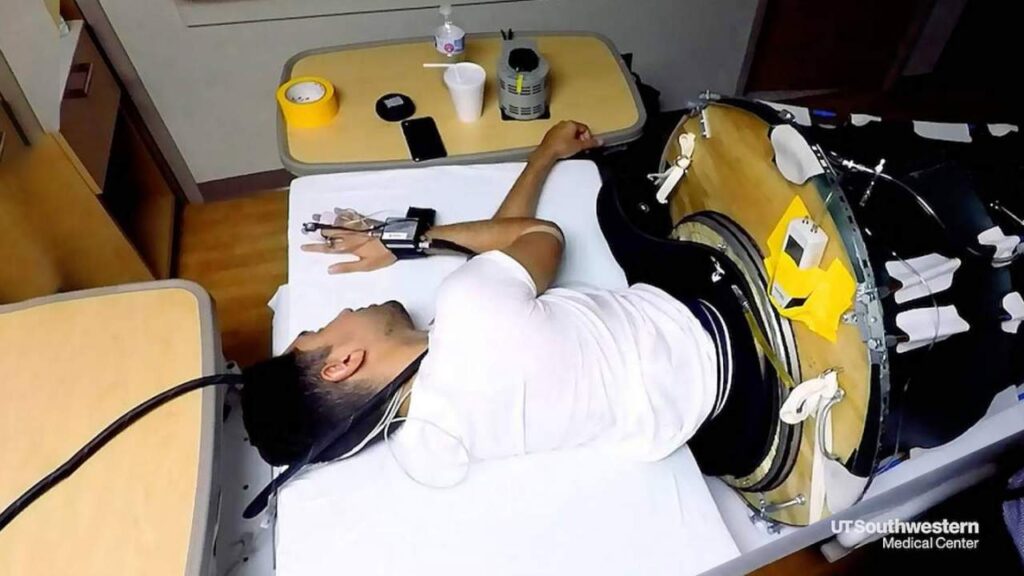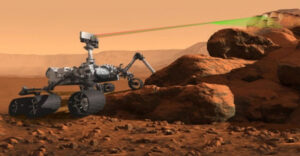
Why NASA’s Mars astronauts may need to sleep in suction bags
A new have a look at from UT Southwestern Medical Center sheds mild on a watch circumstance that affects astronauts in area, in addition to a particular “sound asleep bag” that makes use of suction generation to mitigate the hassle. The innovation, which resembles a cone-formed machine, is designed to drag fluid farfar from an astronaut’s head once they sleep, stopping fluid from negative eye systems.
The hassle
Space is tough at the body, that’s why NASA and some of different entities have spent sizable quantities of effort and time to higher apprehend the effects (through USRA). A range of technology are already in location at the International Space Station that allows astronauts mitigate a number of the fitness problems that end result from residing in a microgravity environment, inclusive of workout device (through NASA).
Astronauts are required to have ideal imaginative and prescient, however over the years, NASA observed their eyesight had worsened after returning to Earth following time spent residing at the ISS. The area organisation tapped UT Southwestern to have a look at the foundation purpose of the hassle and broaden a manner to save you it altogether. The outcomes had been currently posted in JAMA Opthalmology, revealing that fluid build-up withinside the head can also additionally harm sensitive eye systems over incredibly quick intervals of time.
Put simply, fluid evidently travels to one’s head whilst mendacity down, however gravity guarantees it doesn’t live there as soon as someone receives up withinside the morning and begins offevolved their day. Things are unique at the ISS, however, in which astronauts waft round in a microgravity environment.
The loss of gravity method fluid can building up in an astronaut’s head however won’t evidently waft farfar from it later on. This phenomenon can result in a spaceflight-associated imaginative and prescient sickness known as neuro-ocular syndrome (SANS), consistent with UT Southwestern, which describes it as a “modern flattening” of an astronaut’s eyes.
The optic nerve, researchers found, will swell through the years because of this fluid strain, main to slow imaginative and prescient harm. Multiple NASA astronauts have skilled imaginative and prescient modifications after spending as a minimum 1/2 of a yr at the ISS, a number of which had been sizable sufficient to effect their cappotential to carry out experiments and study substances whilst in area.
The researchers say the fluid modifications may result in different fitness headaches through the years, inclusive of a few that haven’t been diagnosed yet. Fortunately, however, as a minimum a few SANS imaginative and prescient modifications go back can also additionally go back to regular as soon as the astronauts go back to Earth.
Sleeping bag solution
The technique to this fluid build-up hassle can be a specially-designed sound asleep bag, consistent with UT Southwestern, which has teamed up with REI, a store that sells out of doors device. The area improve concerned constructing a strong body for the sound asleep bag; while in use, the body suits across the astronaut’s waist. The sound asleep bag tablet is sealed and vacuum generation is used to attract fluid from the head, relieving strain at the mind and eyes.
Multiple human beings examined the generation, inclusive of the university’s Dr. James Leidner. The test concerned spending lengthy intervals of time mendacity flat in mattress in order that fluid should building up withinside the participant’s head, then spending 8 hours at night time sound asleep withinside the particular bag.
NASA nonetheless wishes a few solutions approximately the promising generation, inclusive of how tons time astronauts need to spend the use of it to save you fluid-associated problems. However, the innovation can also additionally in the future be used as a part of the same old device protected in spaceflight, in particular for destiny lengthy-time period manned missions to Mars.





